Открытый урок английского языка в 11-м классе по теме "Cinema"
Цель урока: развитие речевых умений учащихся.
Задачи:
Познавательный аспект:
способствовать расширению общего кругозора школьников в области кинематографии англоязычных стран и России;
ознакомить учащихся с результатами творческой деятельности одноклассников (на уровне восприятия, наблюдения, анализа, сравнения и обобщения);
стимулировать деятельность учащихся путём обращения к дополнительным источникам информации, включая ресурсы Интернета.
Учебный аспект:
cовершенствование речевых навыков школьников:
высказывание своего мнения в вежливой форме об увиденном и прочитанном;
понимание речи в фонозаписи c общим охватом содержания и конкретной информации;
составление синквейна;
Развивающий аспект:
развивать у школьников способности к наблюдению, анализу, сравнению и обобщению;
развивать у них психические функции, связанные с речевой деятельностью: логическое мышление, память, внимание, восприятие;
развивать положительные эмоции и чувства школьников;
формировать у них потребность и способность осуществлять продуктивные речевые действия.
Воспитательный аспект:
способствовать:
воспитанию толерантного отношению к чужому мнению, чужой культуре, более глубокому осознанию своей культуры;
воспитание чувства сопричастности к мировой истории, к памятникам культуры и искусства;
Оборудование урока:
Мультимедийный проектор.
Системный блок компьютера, клавиатура, мышь.
Презентация “Кино”
Магнитофон.
Аудиокассета к учебнику 11-го класса.
Листы бумаги для написания синквейна. (по количеству учеников)
Оформление доски:
Ход урока
I. Вступительная часть.
Teacher: Good morning, guys and girls.
Children: Good morning.
T: Nice to see you.
Ch: Nice to see you too.
T: Take your places. How are you?
Ch: Very well. Thank you.
I am OK. Thank you.
I’m fine
Not bad.
T: Today we’ll speak about the cinema.
II. Основная часть.
1) Brain storm.
Teacher: We shall begin our lesson with brain storm. Think over and say what your associations with the topic “Cinema” are. А… will go to the blackboard and write down all your suggestions.
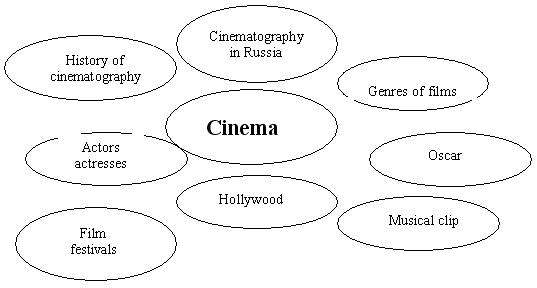
2) Speaking.
T: I think it will be the plan of our lesson. Look at the slide and answer my question. What does this date stand for?
P 1: The inventors of the cinema were the French. The Lumiere brothers invented the first film projector and motion camera in 1895. That year on the 28th of December they demonstrated the first three minutes film “Arrival of the Train”. In that film, a train came towards the camera. People ran out of the cinema, thinking it was a real train.
T: And what can you tell me about the next date?
P 2: The spreading of cinematography in Russia started with the demonstration of the Lumiere brother’s film in May 1896 in St’ Petersburg and in Moscow. A. Khanzhonkov founded the first studio in our country, it was Yalta film studio. In the 1920th the stars of silent films were V. Kholodnaya, V. Polonski, V. Mashkov and others.
T: Who can add anything to this information?
P 3: The most popular genres of Russian films were historic films and screen versions of famous novels “The Quiet Don” for example. The first sound films simultaneously appeared in three countries, the USSR, The USA and Germany. Great attention was paid to films for children. The most famous directors were A. Rou and R. Bykov.
T: Of course, we can’t but mention Hollywood. Look at the 4th slide.
P 4: The first studio appeared in Hollywood (a part of Los Angeles) in 1911. In the 1920th
Hollywood made 80% of the world’s films. First the films were silent and black-and-white later they became sound and coloured. The biggest film companies in Hollywood are MGM, Paramount, 20th Century Fox, Columbia Pictures, Warner Bros and Universal. American films were of different genres melodrama, western, comedy and historical films.
3) Word Square.
T: Thank you for the information. And now it’s high time for us to continue our work. Cinema combines different arts. That’s why people of different professions are involved in film making. You can see the Word Square on the blackboard. 11 professions are hidden in it. Some of them (short words) are written in whole, but as for compound words you will find only the first part. Your task is to find the names of the professions, and if you find the first part of the word add the second and then make up sentences using relative pronoun who. You can search words in different directions.
| e | r | d | z | a | c | t | o | r | p |
| x | v | i | p | r | o | i | u | r | y |
| a | s | r | e | e | s | d | o | f | e |
| k | s | e | l | m | z | d | x | c | d |
| q | e | c | w | a | u | e | r | d | i |
| u | r | t | i | c | s | t | u | n | t |
| o | t | o | e | p | a | s | s | u | o |
| s | c | r | i | p | t | f | g | o | r |
| m | a | k | e | u | p | j | k | s | c |
| | | d | | a | c | t | o | r | p |
| | | i | | r | | | | r | |
| | s | r | e | e | | | o | | e |
| | s | e | | m | | d | | | d |
| | e | c | | a | u | | | d | i |
| | r | t | | c | s | t | u | n | t |
| | t | o | e | | | | s | u | o |
| s | c | r | i | p | t | | | o | r |
| m | a | k | e | u | p | | | s | c |
A camera (operator) is a man who looks through the camera, and operates the equipment.
An actor is a man who pretends to be another person and acts in a film.
A costume (designer) is a woman who prepares costumes: dresses, suits for films.
A make-up (artist) is a woman who can make a new face for an actor.
A sound (mixer) is a man who operates the microphones and gets very angry with people who makes noises during the filming.
A director is a man who is the boss and tells everybody what to do.
A stunt (man) is a person who does all the dangerous things on the screen instead of actors.
An editor is a man who chooses the best bits of the shooting film, cuts film and puts the bits together.
A producer is a man who has general control of the money for a film but he doesn't direct the actors.
A script (writer) is a man who writes scripts for films, shows.
An actress is a woman who pretends to be another person and acts in a film.
4) Reading.
T: Well done. You have found all the hidden words and made sentences in a proper way. Actors and actresses play the leading role in film making. Much depends upon the talent of the actor. Only few of them become stars. The greatest achievement in actor’s profession is getting Oscar. Now we will read the text and try to find answers to the questions.
When were the first Academy Awards presented?
Whose idea was it to hold an annual award ceremony?
Where was the first ceremony held?
What were the winners awarded by?
Who gave the birth of the unofficial name of the Statuette?
(Assessment Task: text № 2 – p.54 – 55)
T: Oscar is given to actors, writers, technicians, directors and producers. Do you know what Russian films, directors were awarded by Oscar?
5) Speaking.
P 6: Russian films were awarded by Oscar too. The first Oscar was given to the documentary film by Vitali Suslenkov in 1942.
Sergei Bondarchuk got Oscar in 1968 for the film “War and peace”.
Then in 1975 was the film shot in corporation with Japanese director Akira Kurosava “Dersu Uzala”.
Vladimir Menshov - 1980 the film “Moscow doesn’t believe tears”
Nikita Mikhalkov. In 1994 his picture “Burn by the Sun” was awarded by Oscar too.
These directors brought honour to our country. It means that our films are worth seeing and we are proud of these outstanding people, who created such masterpieces.
And at last in 2000 it was our cartoon “The old man and the sea” that won this award.
T: Who knows anything about film festivals in Russia?
P 7: There is a special award for actors, actresses, directors in Russia. Moscow International Film Festivals is one of the oldest festivals in the world. It was first held in 1934.The film “Chapaev” opened it. Since 1959 the festival was held once in two years. And only in 1995 it becomes an annual event in the world of Russian cinematography. The prize of the festival is Gold St. George. The president o the festival is N. Mikhalkov.
T: I know that P… has prepared a project “Voronezh and cinematography”. Tell us about it.
P 8: Voronezh makes its contribution to cinematography too. Many famous actors and actresses were born in Voronezh. For example: Iya Savvina (1932), Gleb Strizhenov (1923), Nickolai Rybnikov (1930), Galina Belayeva ( ). Leonid Bronevoi wasn’t born in Voronezh, but he worked in Voronezh Drama Theater after institute.
Young people know the names of such actors as Stas Sadalskii, Sergei Selin, Sergei Astakhov. They are also from Voronezh. We are proud of our famous actors.
T: Besides Moscow Film Festival and Academy of Awards in America there are a great number of festivals in the world.
T: I know that some of you have prepared projects about favourite actors and actresses. Who wants to tell us about his (her) favourite film stars?
P 9: My favorite actress is Nathalie Oreiro. She was born in South America in 1982. She is a singer and an actress. Natalie is young, beautiful and talented. I adore watching film where Natalie stars. She also dances well. She is well known not only in her country but all over the world. I collect posters, calendars with her photos, CDs with her songs and films.
T: What genres of films do our students like?
P 10: Before the lesson I was given the task to interview parents and classmates. I asked them questions about their favourite films, actors, actresses, genres. The results you can see on the slide.
My classmates adore watching comedies, melodramas, action films and adventure films.
P 11: I love action films. They are very dynamic and really exciting. They grab my attention from the first scene. I like films with a mysterious plot. They keep me in suspense. I can't understand people who don't like action films. They are so various that can suit different tastes. They teach people to defend justice and to be strong and brave.
T: And what genres of films do your parents like?
P 11: Our mothers prefer melodramas to comedies and detectives. But fathers’ favorite genres are action films, detectives and thrillers.
6) Listening comprehension.
T: And now I want you to listen to what British children say about their likes and dislikes. Let’s compare our tastes. What genres do British teenagers prefer? Put on your earphones and listen to information very attentively. Then put the answers on the answer sheet.
(Student’s book p.206)
7) Cartoons.
T: Small children adore cartoons. Our Russian cartoons are marvelous. We tried to translate into English two very popular among Russian children cartoons. (отрывки из мультфильмов демонстрируются по видео или вставляются в презентацию без звука, а дети их озвучивают на английском языке. Я убрала их из презентации из – за технических ограничений).
“The adventure of the parrot Kesha”
(sound) Bum!!!
A crow: Oh!
A cat: Ha – ha. You are churls. It’s a bubble gum. My master has brought it from…
A parrot: Tahiti?
A cat: Yeah. And …a thing to put on ears.
A parrot: A hat?
A cat: A hat?! A walkman!
A boy: Kesha! What has happened? What’s up?
A parrot: You ask me what’s up! I walk the dog! I clean in the house! And look at my clothes!
I am like a tramp.
A boy: Shame on you, Kesha.
A parrot: Shame on me.
A boy: You can choose anything you like.
A parrot: You want me to wear theses things! Never!
A boy: Kesha..
A parrot: Good bye forever! Our meeting was a mistake.
“The holidays in Prostokvashino”.
A dog: Gavryusha, come here!
Down!
Voice!
Take!
Postman: I have come on business! And you are butting! You have spoiled my hat already.
Look. There are only holes in it.
A boy: What is your business?
Postman: I have brought you a parcel. But I will not give it to you, because you haven’t got
any documents. As for cats and dogs they shouldn’t have any documents at all.
A boy: Why do you come then?
Postman: Because it’s my duty. If there is a parcel I will have to bring it but if there are no
documents I will not give it to you.
A cat: Give us our parcel!
Postman: And what documents have you got?
A cat: whiskers, paws and a tail!
T: Thank you guys and girls. We are ready to continue our lesson.
9) Song. “Tonight.”
T: Almost every song has a musical clip. Young people enjoy watching them. So we can say that musical clip is a type of a cinema. Our guys learned the song “Tonight” by Remonn. They will play the guitars and sing the song for us. Guys, you are welcome.
10) Синквейн.
T: I want you to write a short poem.
Правила написания синквейна таковы:
На первой строчке записывается одно слово – существительное. Это и есть тема синквейна.
На второй строчке пишутся два прилагательных, раскрывающих тему синквейна.
На третьей строчке записываются три глагола, описывающих действия, относящиеся к теме синквейна.
На четвертой строчке размещается целая фраза, предложение, состоящее из нескольких слов, с помощью которого вы характеризуете тему в целом, выказываете свое отношение к теме. Таким предложением может быть крылатое выражение, цитата, пословица или составленная фраза в контексте с темой.
Пятая строчка – это слово-резюме, которое дает новую интерпретацию темы, выражает личное отношение к теме.
T: On the sheets of paper there are nouns for you: cinema, melodrama, thriller, film, clip, cartoon, actor, cinematography. Your works you will put on the blackboard.
III. Итоги урока.


 Получите свидетельство
Получите свидетельство Вход
Вход




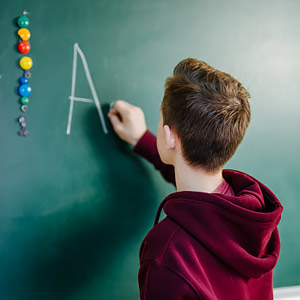
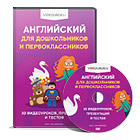
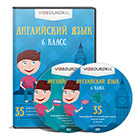
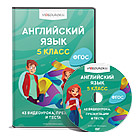
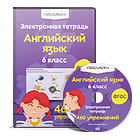
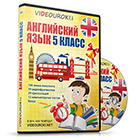
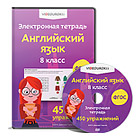
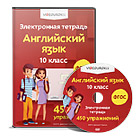
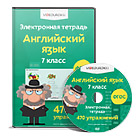
 Конспект урока по английскому языку по теме "Cinema" (31.89 КB)
Конспект урока по английскому языку по теме "Cinema" (31.89 КB)
 0
0 2031
2031 161
161 Нравится
0
Нравится
0


